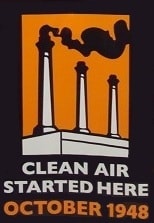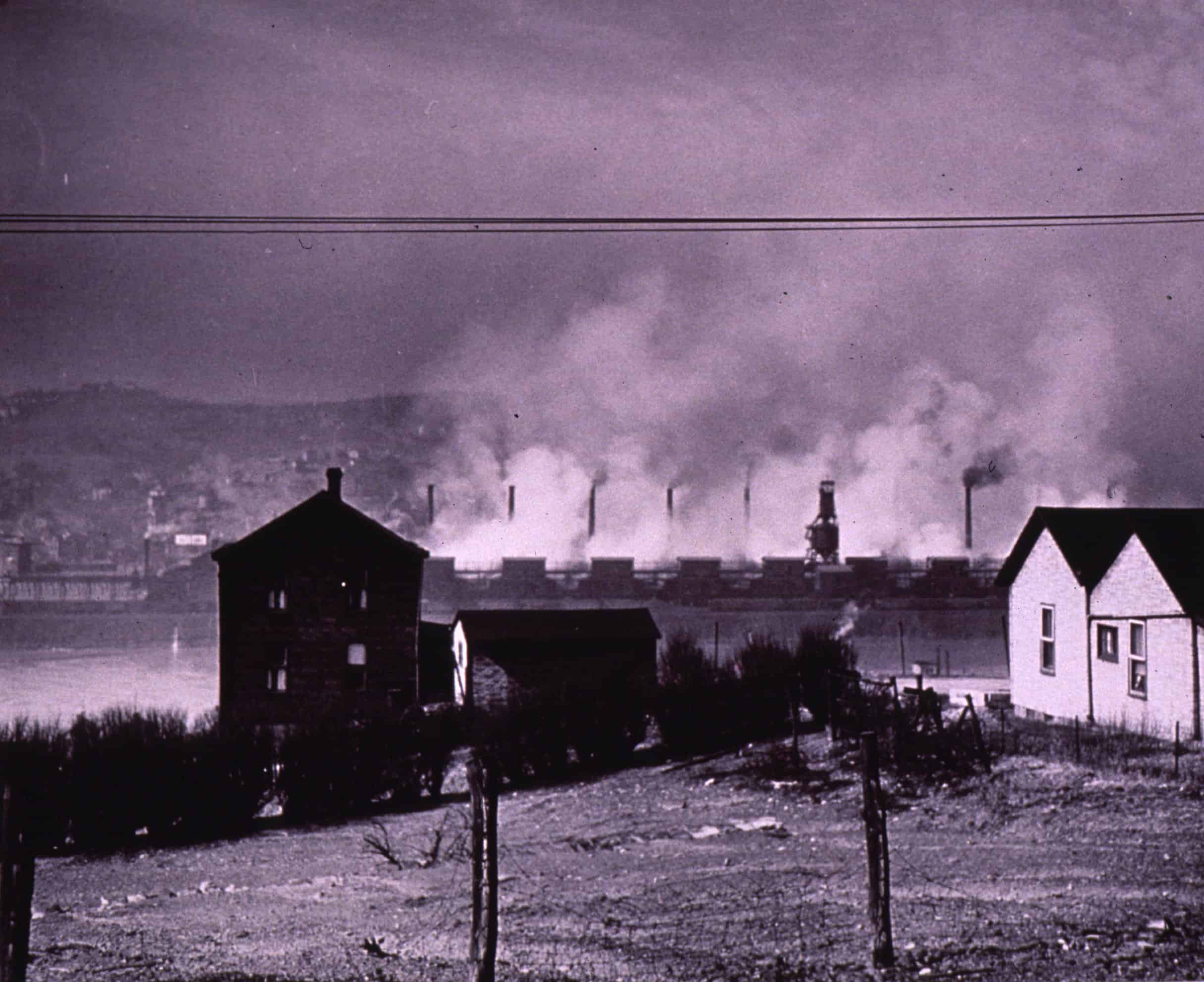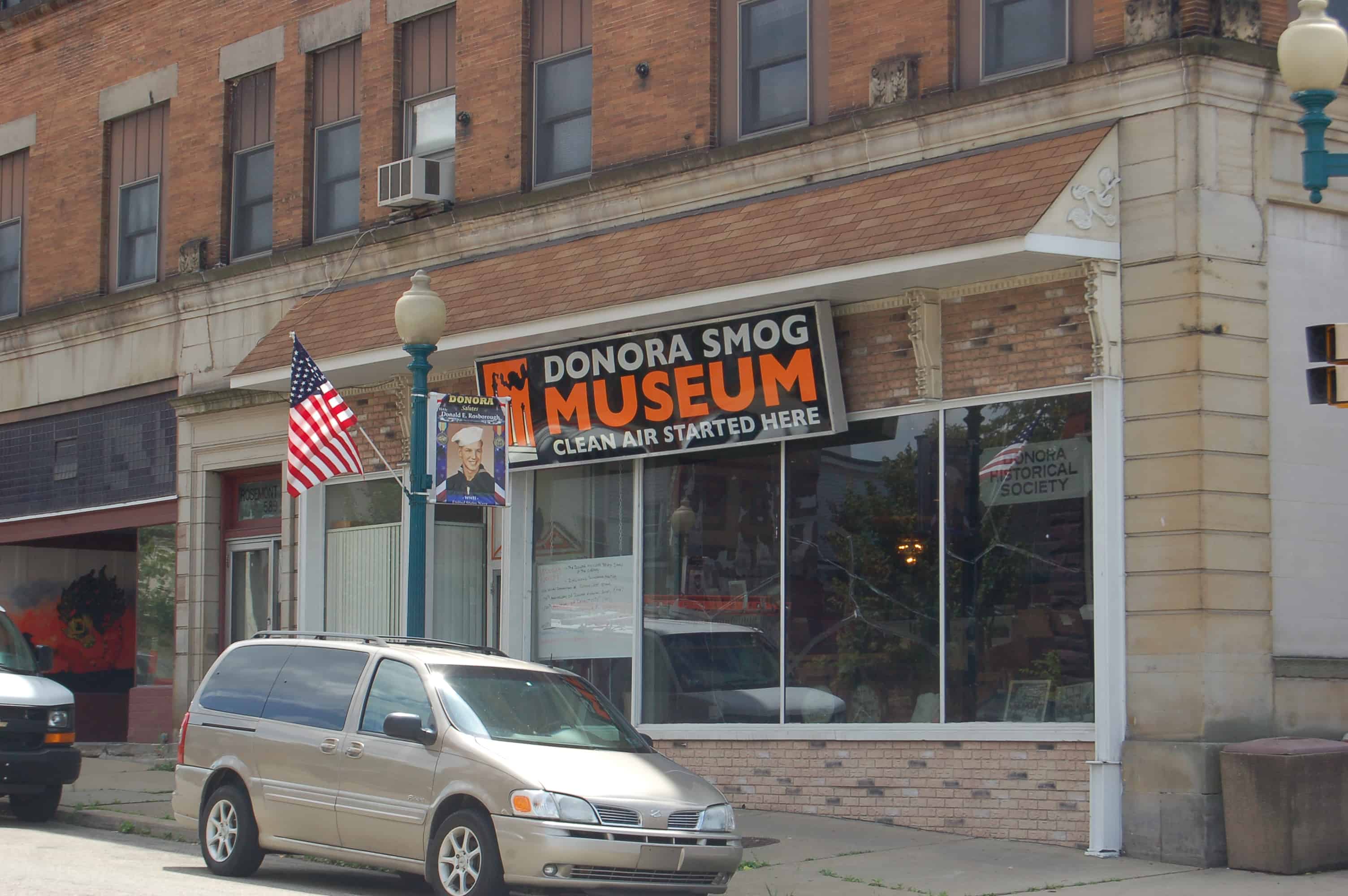Clean air started here
By Steve Schaeber, MACS Technical Editor
An important part of MACS Section 609 Certification is a history lesson, discussing the series of events that led to the rules and regulations of A/C system service. When conducting classes, many instructors explain these rules come from federal law, specifically the US Clean Air Act of 1990. We follow that up with the 1987 signing of the Montreal Protocol, though sometimes even go back as far as 1974 when Rowland and Molina first published their paper on the damaging effects of chlorine in the stratosphere.
But that’s not exactly where the story begins. Some refer to Rachel Carson’s 1960 publishing of Silent Spring, considered to be a driver of the modern environmental movement. But looking back even further, in October of 1948 a small Pennsylvania town experienced the first environmental disaster to captivate the nation, convincing many that air pollution is more than just ugly air.
The borough of Donora lies in a valley on a bend of the Monongahela River, about 20 miles southeast of Pittsburgh. Its major industries were a zinc works, steel mill and a wire plant, which as part of its process would emit hydrogen fluoride, sulfur dioxide and carbon monoxide from their smoke stacks. Townsfolk grew accustomed to the yellowish, acidic air, which although part of daily life, would eventually disperse in the atmosphere.
October 27, 1948 proved different as a thick fog began building up over the town, due in part to an atmospheric phenomenon known as a temperature inversion; a warm air mass above trapped the town’s pollution near the surface in a layer of cooler air. Residents continued about their business over the next several days, but as more exhaust released into the stagnant air, the smog became worse and visibility decreased.
Before long, smog started taking its toll on people’s health. The sick and elderly first experienced respiratory problems as doctors became inundated with calls. Even those who didn’t normally get sick had difficulty breathing and developed serious coughs. Working around the clock, physicians, nurses, police and firemen went door to door administering oxygen and helping those in need, while drug stores remained open to fill prescriptions. Many people fled town, traveling over the mountains to avoid the toxic fumes.
After five days, an agreement on Sunday, October 31 between town council and plant operators temporarily shut down the mills, which together with a rain storm finally alleviated the smog. Twenty deaths and hundreds of illnesses occurred during this event, with several thousand more documented in the coming weeks. The mills started back up the following Monday.
The events at Donora drew national media attention to the issue of air pollution. Donora’s killer smog was front page headline news in the Herald-American, Pittsburgh Post-Gazette, and the New York Times. Numerous agencies investigated, including the Board of Health, Kettering Laboratory, US Public Health Service, and the PA Bureau of Industrial Hygiene. As a result, PA established the Division of Air Pollution Control in 1949, the Clean Streams law in 1965 and in 1971 the Department of Environmental Resources. On the federal level, the US Congress established the Environmental Protection Agency in 1970 through passage of that year’s Clean Air Act.
 Environmental awareness has taken on many forms in subsequent years, from tail pipe emissions and hair spray to acid rain and medical waste. Today’s catch phrases deal mostly with global warming and climate change, leading some technicians to think ozone layer protection and proper refrigerant handling are non-issues that we’ve already dealt with. But there’s an old saying, “Those who don’t study history are doomed to repeat it.” How true that is. We must learn from the past and educate future technicians, not just about current refrigerant issues, but also why these rules were written in the first place.
Environmental awareness has taken on many forms in subsequent years, from tail pipe emissions and hair spray to acid rain and medical waste. Today’s catch phrases deal mostly with global warming and climate change, leading some technicians to think ozone layer protection and proper refrigerant handling are non-issues that we’ve already dealt with. But there’s an old saying, “Those who don’t study history are doomed to repeat it.” How true that is. We must learn from the past and educate future technicians, not just about current refrigerant issues, but also why these rules were written in the first place.
Author’s Note: Many thanks to Brian Charlton, curator, Donora Historical Society and Smog Museum. Visit www.donorasmog.com to learn more!


